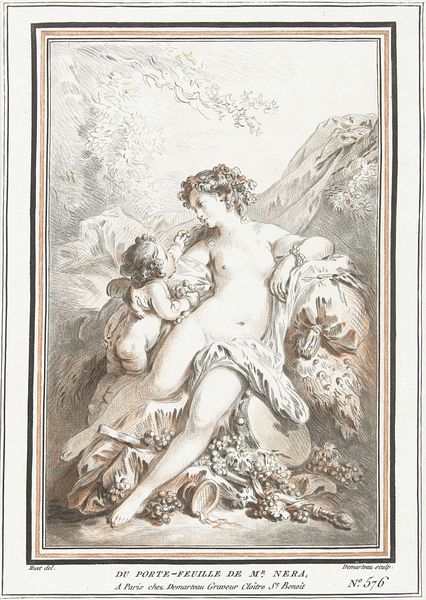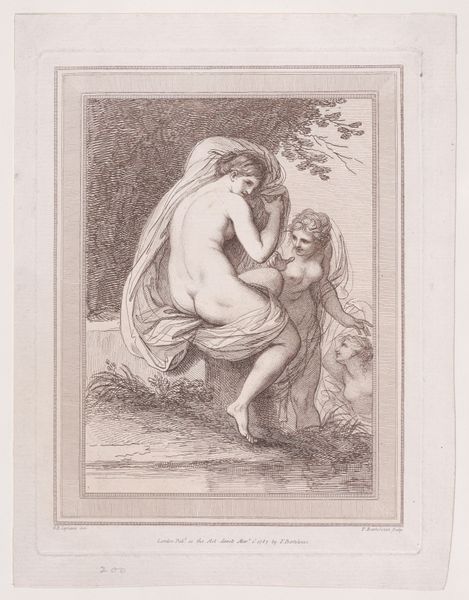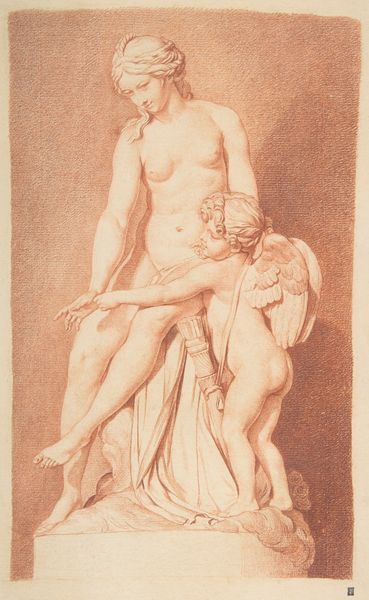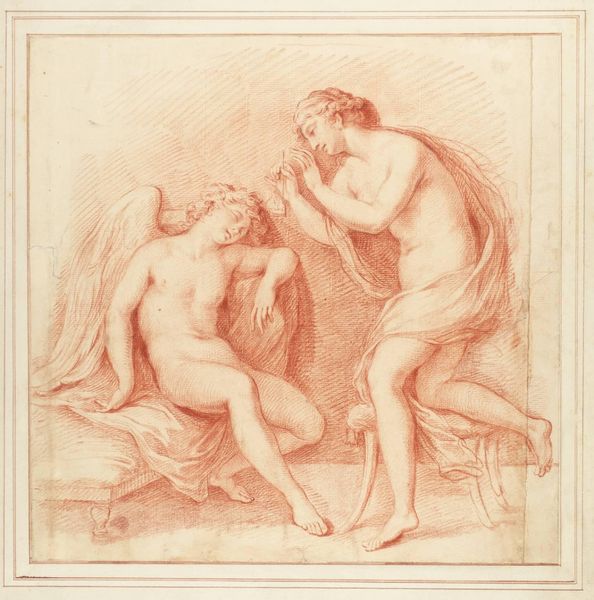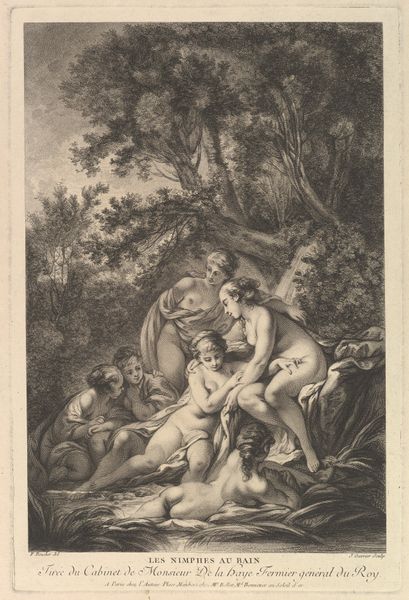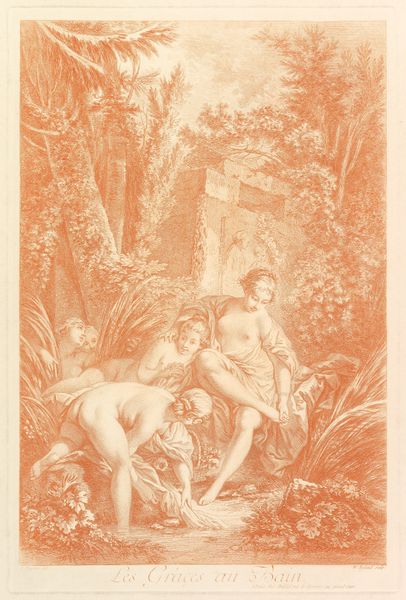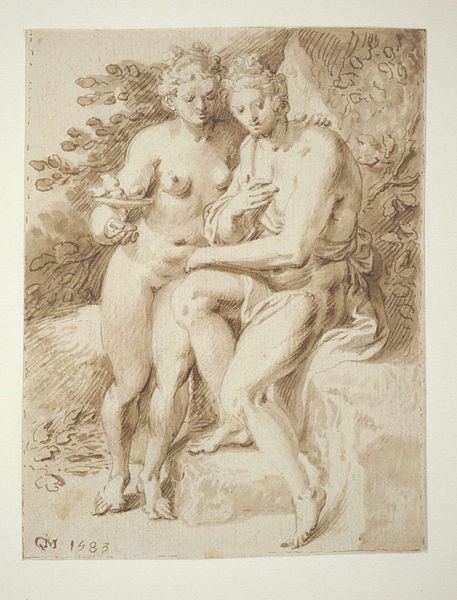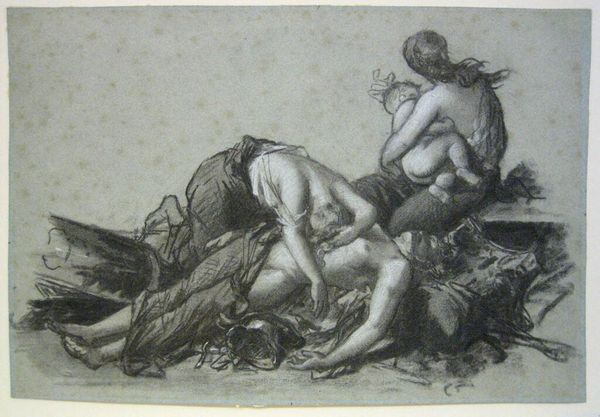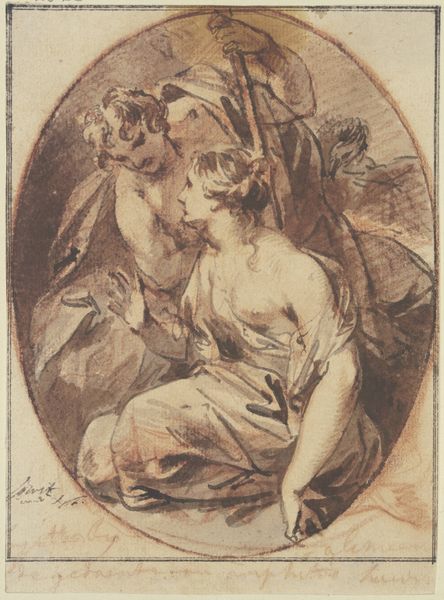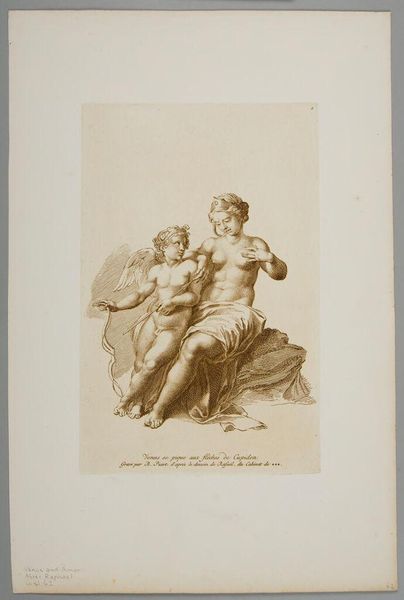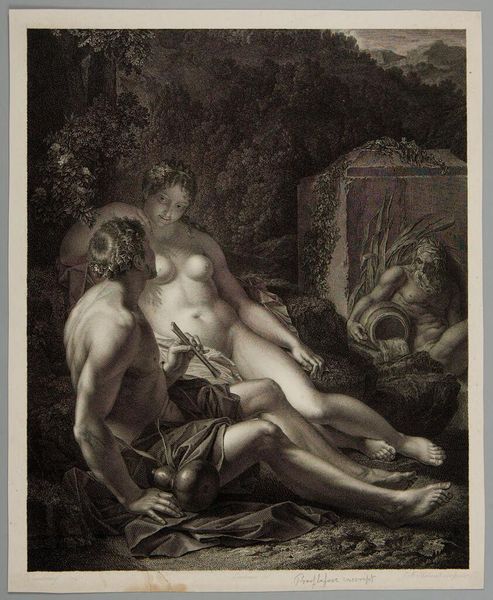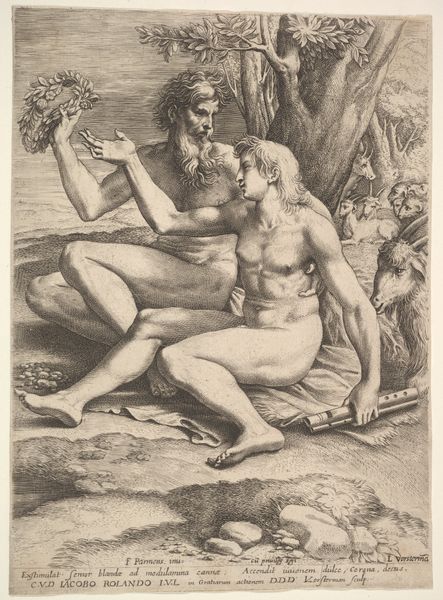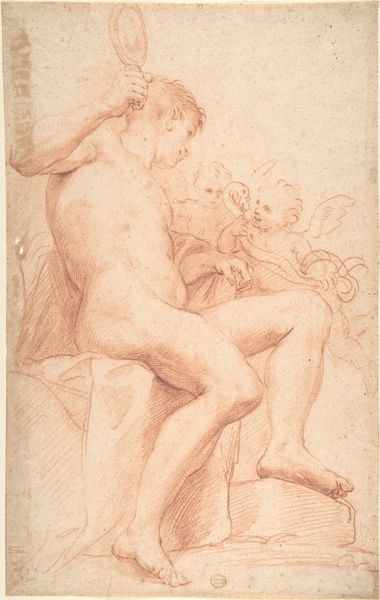
Untitled: Two female nudes with two putti and doves 1800 - 1950
0:00
0:00
Dimensions: 16 3/4 x 11 7/16 in.
Copyright: Public Domain
Curator: Welcome. We're looking at a drawing called "Untitled: Two female nudes with two putti and doves," attributed to someone working in the style of Bellanger. It’s thought to have been made sometime between 1800 and 1950. Editor: My first impression is that it is reminiscent of classical allegory. The rendering is beautiful, with the red chalk giving it warmth and lending an antique feel to the depiction of bodies. Curator: It does evoke classical imagery, doesn’t it? Think about the Neoclassical revival that gained prominence in the late 18th and early 19th centuries. Artists were increasingly looking back to classical antiquity. These allegorical scenes became a common vehicle to transmit virtue, beauty, and certain ideals of femininity. Editor: I find myself wondering about the drawing process. How many preparatory sketches led to this finished piece? And, this piece has some Baroque sensibility. Do you know if Bellanger was involved in workshops or collaborations to bring art and craft together? Curator: Good question. The relationship between artists, workshops, and the larger economic structure of art production are significant. Reproducing art through prints also impacted its public reception, making it available to a wider audience. This allowed visual culture to filter into different classes, but also dictated its valuation in some ways. Editor: Absolutely. It's about who gets to consume what images and how these reproductions mediate social values. Looking at the material, this sepia toned chalk, for example: where was it sourced? And, how does that sourcing fit into globalized trade networks that were rapidly developing then? Curator: These are important questions, which bring material culture into art-historical discourse. The pigments and the supports used absolutely shape how artworks are received and their economic value. They also reveal colonial networks and international relations between production sites. Editor: Ultimately, that sepia tone aestheticizes classical allegories and creates its own form of power. Thinking of this, it becomes very revealing, especially considering how accessible this piece may have been as a print in its era. Curator: Thank you for pointing that out! It's fascinating how material and history intertwine and show us that art isn't merely about aesthetics; it's also a marker of production, power, and history. Editor: Right! It is in looking at both the art object and its materiality that we can grasp the whole range of contexts in art historical inquiry.
Comments
No comments
Be the first to comment and join the conversation on the ultimate creative platform.
